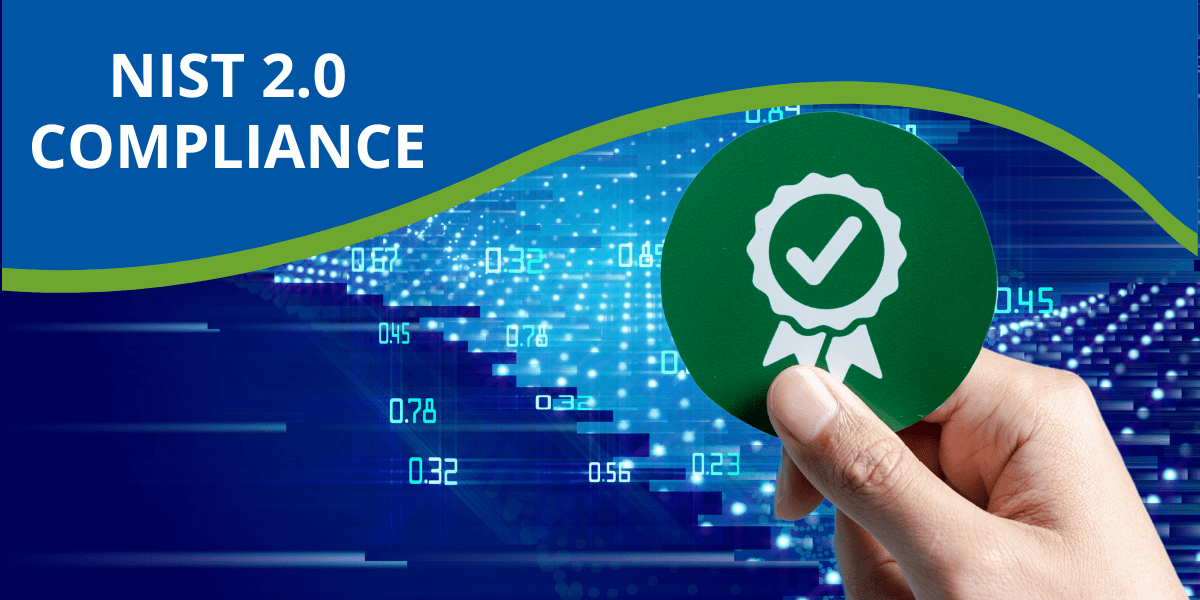Is your business protected from cybersecurity threats? As we enter the new year, the digital landscape will continue to evolve. And, while this can be an exciting time for innovation, rapid change can potentially bring in new challenges for cybersecurity in 2024.
According to Statista, in a 2023 global survey of Chief Information Security Officers, email fraud emerged as a top cybersecurity threat, identified by 33% as one of the three most significant risks. Close behind, 30% of CISOs highlighted insider threats as a major concern for their organization’s cybersecurity. Additionally, the compromise of cloud accounts and DDoS (Distributed Denial of Service) attacks were notable concerns, with each cited by 29% of the respondents. These findings underscore the evolving landscape of cyber threats facing organizations today.
In this age where data breaches and cyber attacks are becoming more sophisticated, it’s vital to stay ahead in your cyber readiness. A proactive approach to cybersecurity is no longer just a recommendation; it’s a necessity for safeguarding valuable data and maintaining trust with customers.
To assist you in strengthening your cyber defenses, we’ve compiled a comprehensive checklist. This checklist outlines key strategies and practices essential for navigating cybersecurity in 2024, ensuring that your organization remains resilient and secure in the face of emerging digital threats.

1. Framework-Based Risk Assessment
- Tailor to Specific Industries: Align risk assessments with industry-specific regulations, ensuring compliance with standards like HIPAA for healthcare or PCI for payment card processing.
- Utilize Established Frameworks: Leverage frameworks such as the NIST Cybersecurity Framework and CIS Controls to provide a structured and comprehensive assessment process. Our CISO, Deryck Ali notes, “You’ve got to tie it back to a framework, and if there’s no framework, then you tie it back to something general that we use.” This approach helps in identifying vulnerabilities and strengthening areas like network security, data protection, and employee training.
2. Identify Emerging Threats
- Stay Abreast of Trends: Keep up-to-date with the latest trends for cybersecurity in 2024 and threats, which can include ransomware, phishing, and AI-driven attacks.
- Customize Defense Strategies: Develop dynamic and flexible security strategies that can quickly adapt to new types of cyber threats, ensuring your defenses remain effective against both known and emerging risks.
3. Implement Comprehensive Security Measures
- End-to-End Protection: Establish a robust security infrastructure covering all aspects of your IT environment, from endpoint security to network defenses.
- Proactive Monitoring: Utilize advanced monitoring tools and services, such as intrusion detection systems and real-time threat analysis, to identify and mitigate threats before they cause harm.
4. Zero Trust and Identity Management
- Implement Rigorous Access Controls: Adopt a Zero Trust model, requiring verification at every access point within your network to minimize the risk of unauthorized access.
- Enhance Authentication Processes: Integrate advanced authentication methods like biometrics and behavioral analytics to ensure only authorized users gain access to sensitive data.
5. Continuous Awareness Training
- Create a Security-Conscious Culture: Foster a workplace culture where every employee is aware of cybersecurity best practices and understands their role in maintaining security.
- Regular Training and Simulations: Conduct regular training sessions, including simulated phishing and social engineering attacks, to keep staff vigilant and prepared. Beyond that, it could mean lower costs for cyber insurance. Our CISO, Deryck Ali states, “At CorCystems, we try to tie in cyber insurance with our training. If you do have security awareness training, it could equate to lower premiums.”
6. Vendor and Third-Party Management
- Establish Stringent Security Requirements: Ensure all vendors and third parties meet your organization’s security standards through rigorous evaluation and ongoing monitoring.
- Incorporate Security into Contracts: Include specific cybersecurity requirements and incident response protocols in contracts with third-party service providers.
7. Budgeting and Resource Allocation
- Allocate Resources Wisely: Direct resources towards the most critical areas of your cybersecurity infrastructure, considering factors such as emerging threats and regulatory changes.
- Invest in Future-Proof Technologies: Prioritize investments in scalable and flexible cybersecurity solutions that can adapt to the evolving digital landscape.
8. Incident Response and Recovery Planning
- Develop Comprehensive Response Strategies: Create detailed incident response plans for various types of cyber incidents, clearly outlining roles and procedures.
- Regularly Test and Update Plans: Conduct frequent drills and update your plans regularly to ensure your organization can quickly and effectively respond to and recover from cyber incidents.

As we look towards the new year, it’s clear that cybersecurity in 2024 is not just evolving; it’s transforming at an unprecedented pace. This transformation brings with it both challenges and opportunities. By embracing a comprehensive cybersecurity strategy, you can not only defend against emerging threats but also foster a culture of resilience and awareness.
This journey begins with a tailored, framework-based risk assessment and extends to continuous training and robust incident response planning. The checklist we’ve outlined is not just a set of tasks; it’s a roadmap to a more secure future for your business. The future may be uncertain, but with the right preparation, your organization can face it with confidence and security. If you’re ready to take your cybersecurity to the next level in 2024, book a consultation with us today!





